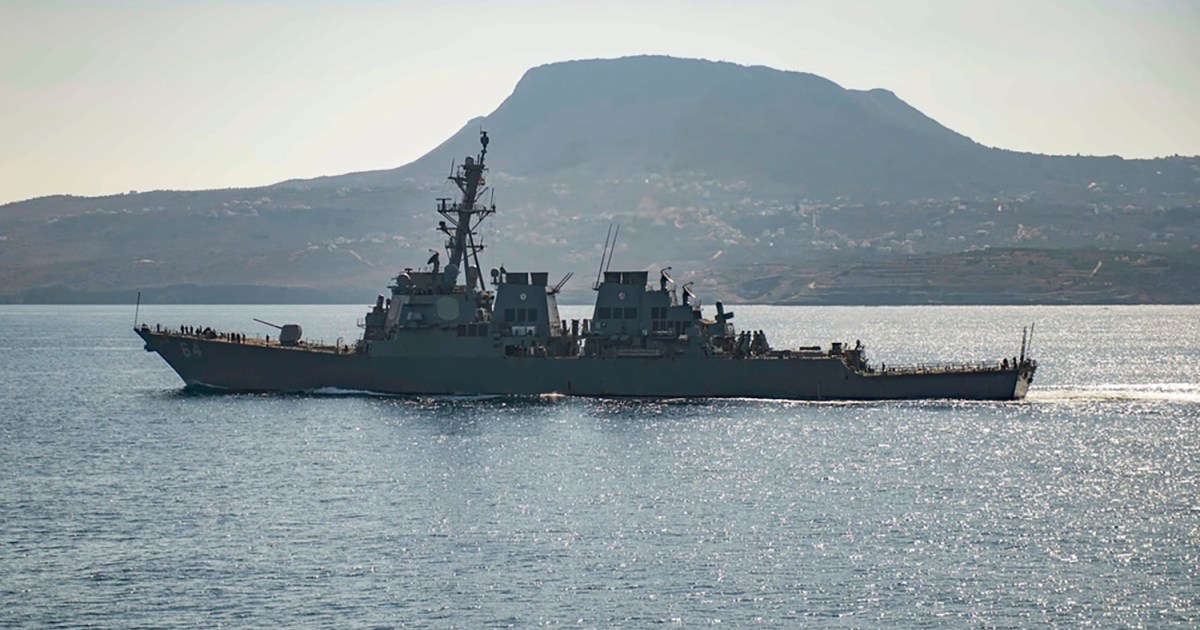
Run by the United States multinational naval forces The ship, which was supposed to protect and secure maritime traffic through the Red Sea from attacks by Yemen’s Houthi rebels, appears to have been significantly weakened – although not quite dead in the water – before it ever sailed together.
Less than a week after the announcement of Operation Prosperity Guardian (OPG), France, Italy and Spain have withdrawn from the almost fully deployed force, which is said to include warships from more than ten nations.
The decision to cobble together an essentially anti-Houthi coalition was almost forced on Washington. In early November, a US destroyer shot down several missiles fired from Yemen, but the US tried to maintain its usual posture and did not advertise that it would attack the Yemeni group.
As long as that militant Houthis While the US unsuccessfully tried to fire missiles at Israel, a country that attacks Yemen’s Arab and Muslim brothers, it was able to maintain that the entire affair was not a serious regional escalation. But when its repeated attacks on ships heading to and from the Suez Canal threatened the security of international sea routes, the United States was forced to act.
The US Navy already has a large number of ships in the region. So why should it ask friendly nations for a larger contribution?
One reason for this is that even with such a large military force, the US cannot spare many ships for this task. The other reason is political reluctance to be the only nation to attack Yemen, as this would likely be interpreted as direct military action in favor of Israel, particularly in the Middle East.
The U.S. political and military dilemmas are largely due to Yemen’s geography and control of the strategically important chokepoint at the mouth of the Indian Ocean and the Red Sea. The Bab el-Mandeb Passage is only 29 km (16 nautical miles) wide at its narrowest point.
The approach is teeming with warships: more than 35 of at least twelve nations that do not border the Red Sea are now in positions from which they could reach the strait in less than 24 hours. There are at least as many in the ports of nations on the African and Arabian coasts.
Many of these ships were already in the region before October 7th. The northwestern parts of the Indian Ocean, which flow into the Gulf of Aden Bab el-Mandeb are probably the most notorious pirate-infested waters of the 21st century.
The civil war and collapse of the Somali central government led to unprecedented levels of maritime piracy. Somali pirates venture out to sea in fast small boats armed with machine guns and rocket-propelled grenades, intercepting merchant ships heading toward and from Bab el-Mandeb in three directions: from the Far East, south past India; From the Gulf we sail around the Arabian Peninsula; and from north to south along the African coasts.
Shipping companies demanded protection, and the international community, recognizing the need to keep shipping lanes open and safe, provided that protection. Every month, 200 ships cross the Suez in each direction, carrying no fewer than 3 million containers.
Since 1990, Combined Task Force 150 (CTF-150) has been involved in anti-piracy missions. More than 30 nations, mostly Western but also Saudi Arabia, Pakistan, Thailand, Singapore and Turkey, took part and typically kept at least four warships on station, rotating every three to four months.
In 2022, a new force, CTF-153, took power. When the recent war in Gaza began, the force consisted of the US destroyers USN Carney and USN Mason, the Japanese destroyer JDS Akebono and a South Korean destroyer, ROKS Yang Man Chun.
Anticipating the arrival of stronger troops, the US ships immediately entered the Red Sea, and both have repeatedly intercepted Houthi missiles and drones. The U.S. Navy hastily deployed two aircraft carrier task forces – which include anti-aircraft and anti-submarine cruisers and destroyers, helicopter carriers, attack ships and other attack and defense units – to the wider region.
It is almost certain that the White House did not immediately have a concrete plan of action for involvement in the Gaza conflict, but the decision to deploy naval and air forces in the region capable of taking on any potential adversaries was militarily clever.
Meanwhile, the White House also became involved in diplomacy. The US and Iran exchanged indirect statements and assured each other that they did not seek confrontation. Iran said it had not been informed of the October 7 Hamas attacks on Israel, and the U.S. did everything it could to avoid angering Iran. In return, Tehran pressured the Lebanese armed group Hezbollah to refrain from a major offensive. The de-escalation seemed to work.
But then the Houthis, who, like Hezbollah, were seen as Iranian proxies, decided to launch an attack in the Red Sea and demanded that Israel end its war against Gaza. They fired long-range missiles at Israel and naval missiles at U.S. Navy destroyers that had entered the Red Sea.
Both operations failed, all missiles and drones were intercepted and shot down several times. The U.S. Navy was confident that its two destroyers would be able to rise to the occasion and might be reinforced by a few more over time.
But as tankers and container ships suffered almost daily attacks in the Red Sea, the escalation was undeniable. Many of the world’s largest shipping companies have switched from sailing through the Suez Canal to the longer and more expensive route around Africa. Commercial carriers now charge a $700 surcharge for each container traveling the longer route.
If you only count those heading to Europe loaded with Asian industrial goods, the additional costs amount to a staggering $2 billion per month. This increase is passed on to end customers – leading to inflation. In addition, the longer travel will soon lead to distribution delays, shortages and general disruption to the economy that every country will feel.
The The markets demanded action and the United States optimistically believed that it could assemble a strong force of up to 20 participating nations to carry out Operation Prosperity Guardian. Within a few days, high hopes were lost in rejections. The Pentagon assumed that China, a country with a keen interest in keeping sea lanes open for its exports to Europe, would join in, especially since it already has a self-supporting task force of a destroyer and a frigate in the western Indian Ocean .
However, Beijing responded that it had no interest in joining the OPG. Rejections also came from major Arab navies on the Red Sea coast: Saudi Arabia and Egypt. They indicated that they did not want to give the impression that they were implicating an Arab country in this situation. The US apparently understood its position and was confident that it would have no problems attracting enough ships.
Meanwhile, France, Italy and Spain have indicated they will not join a mission under US command – only if it involves a European Union or NATO force. In addition to the USA, this leaves the United Kingdom, Norway, the Netherlands, Greece, Canada and Australia as nations that are still officially on board with the OPG.
Most already have ships in either the Indian Ocean or the Eastern Mediterranean and could reach the Red Sea within days, allowing the OPG to take charge and begin escorting merchant shipping before the New Year.
The merchant navy’s first reaction came on Sunday when Danish shipowner Maersk announced that its ships would resume transit through the Red Sea under OPG escort. If OPG can ensure safe passage, it would step up its support and could encourage container companies like MSC and CGN, oil giant BP and others to return to the shortest route. But Maersk made it clear that it could return to the longer route around Africa depending on how security conditions develop.
Regardless of the number of countries participating, Operation Prosperity Guardian will not be just a simple escort of ships through the southern Red Sea. In recent days there have been several worrying signs of a possible major escalation that could easily lead to another front between key regional players.






Recent Comments